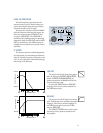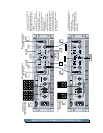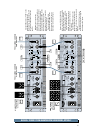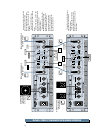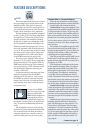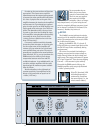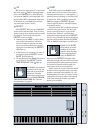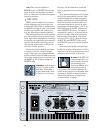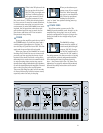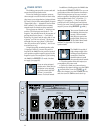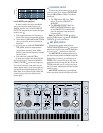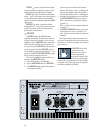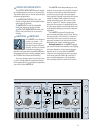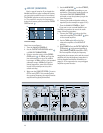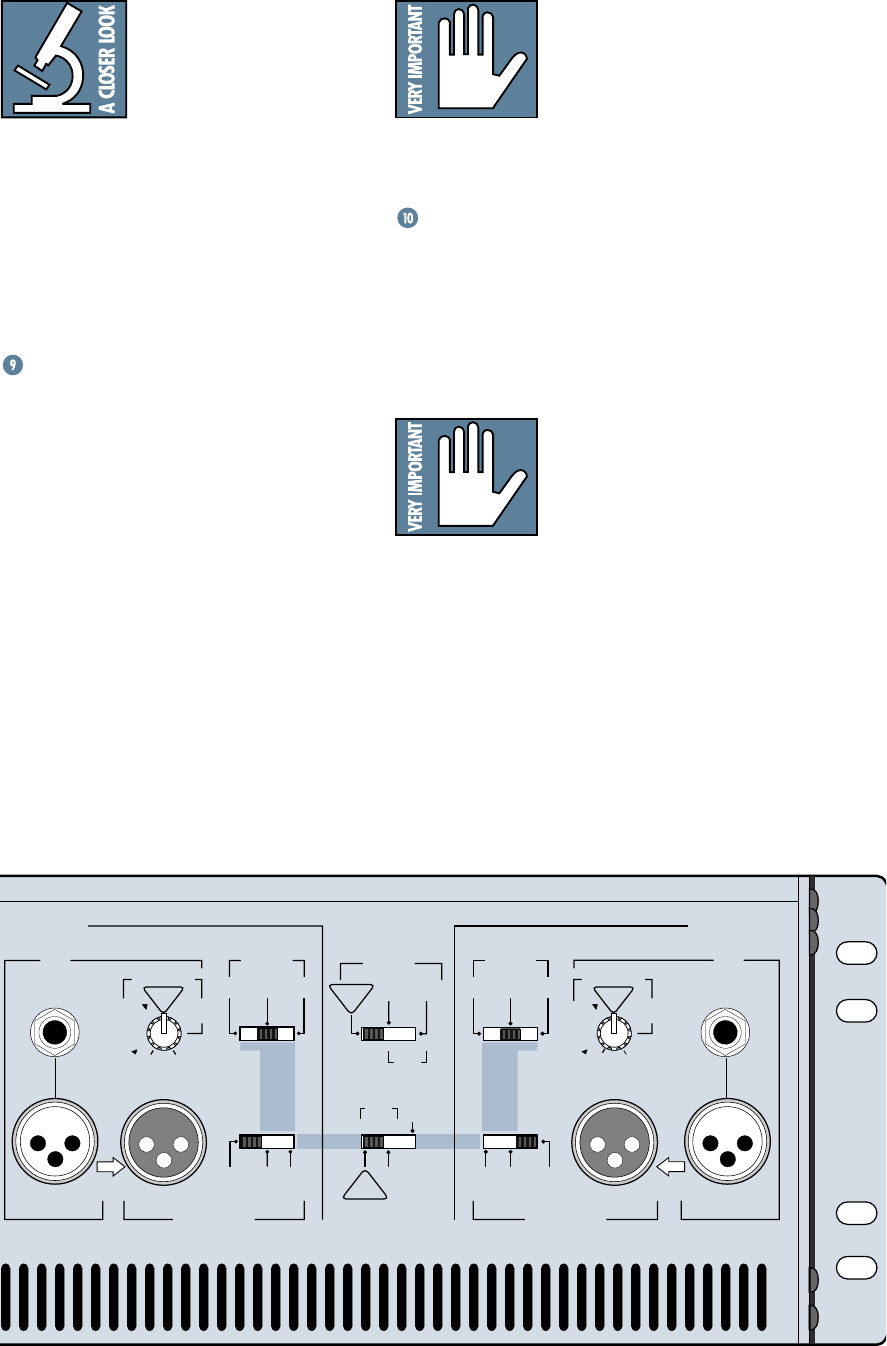
21
What’s that? Why doesn’t the
fan just go fast all the time?
Well, if it did, you might actu-
ally hear it whirring during
your quiet moments (there
are quiet moments in your
life, aren’t there?). While this whirring would
be of no concern in most live-sound situations,
it could become annoying in a control room
environment. So, when the M•2600 is not work-
ing hard, the fan goes slow; when the music
gets loud and puts the amp to work, the fan
goes faster, and faster still if the heatsink
temperature keeps rising.
POWER
To turn on the amplifier, push the top half of
the
POWER
switch. It clicks into place and a
soothing green light adjacent to it glows. To
turn the amp off, push the lower half. It’ll click
again and the green light will extinguish.
When you power up the M•2600, an in-rush
limiting circuit limits the turn-on current and
prevents you from popping the house circuit
breakers. After about a second, a relay clicks,
defeating this in-rush circuit, meanwhile built-
in output muting relays prevent any pops or
thumps from being transmitted to the speakers.
Be sure the signal driving the amplifier is turned
down when you first power up the system.
There are few things as rude as four seconds
of silence followed by full-blast stereo sound,
especially when the baby is sleeping.
When you shut down your
system, turn off your ampli-
fiers first. When powering
up, turn on your amplifiers
last. This way, equipment
feeding the amp won’t
“pop” or “thud” the speakers during power up
or power down.
POWER CORD
We all know what a power cord is. The
M•2600 has a detachable cord. Attach it to the
amplifier first, then plug it into an AC outlet
properly configured for the type of plug on the
power cord and for the voltage rating of your
amplifier.
The M•2600’s voltage
source must be capable of
continuously delivering 20
amps at 120 VAC (9 amps
for 240 VAC models and 14
amps for 100 VAC models).
For safety reasons, the source must be a 3-prong
outlet with hot, neutral, and ground terminals.
We’re dealing with some big-time electricity
here — don’t mess with it. See “AC Power Con-
siderations” on page 29, and carefully read and
follow all the safety instructions at the start of
this manual.
STEREO
TYPICAL
1
CHANNEL
S
U
B
W
O
O
F
E
R
TYPICAL
35 Hz
CHANNEL
2
ON
TYPICAL
IN
IN
LOW CUT FILTER
INPUT
INPUT
CROSSOVER
SWITCHED OUTPUT
SWITCHED OUTPUT
BALANCED
OR
UNBALANCED
170 Hz
100 Hz
OFF
STAGE
MONITOR
90Hz
LOW
OUT
HIGH
OUT
THRU
LOW
OUT
HIGH
OUT
THRU
120Hz
60Hz
CROSSOVER
90Hz
120Hz
60Hz
AMP MODE
B
R
ID
G
E
D
M
O
N
O
OUTPUT APPLICATION
BALANCED
OR
UNBALANCED
LIMITER
(CH1 & CH2)
LOW OUT
(SUB WOOFER)
OFF
CH's
SUMMED
FULL
RANGE
LOW CUT FILTER
170 Hz
100 Hz
OFF
STAGE
MONITOR
S
U
B
W
O
O
F
E
R
TYPICAL
35 Hz
THRU
THRU



